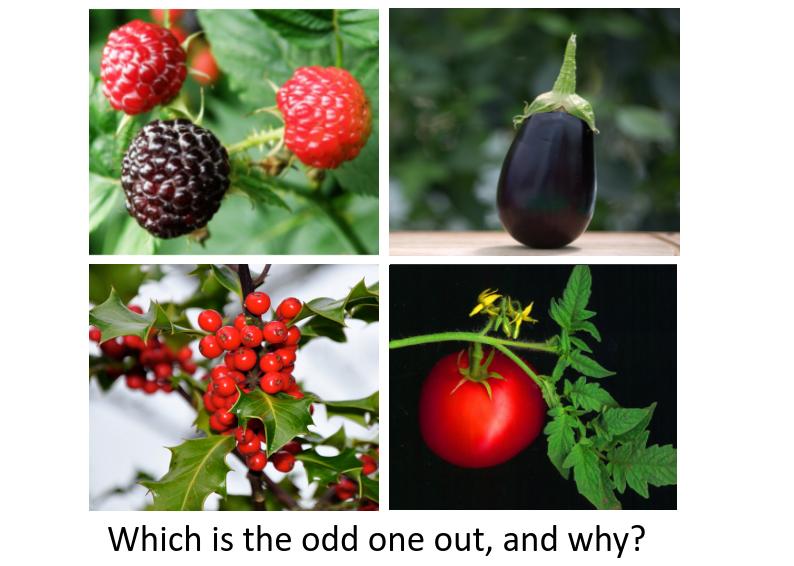Use provocations - new year resolution
Saturday 4 January 2020
 IB Biology students (HL) need to be able to draw and annotate diagrams of flowers and seeds. A teacher might bring in some flowers and run quite a descriptive lesson. Students label parts, copy diagrams but don't think much about what they are doing.
IB Biology students (HL) need to be able to draw and annotate diagrams of flowers and seeds. A teacher might bring in some flowers and run quite a descriptive lesson. Students label parts, copy diagrams but don't think much about what they are doing.
Students are answering the question, "What is the name of this part?" or "What is the function of this?" Hardly higher order thinking, but it could be quite fun and appropriate, the IB Bio guide says, "Skill: Drawing internal structure of seeds. Skill: Drawing of half-views of animal-pollinated flowers."
In fact there are so many different examples of flowers and fruit that some might argue that it's best to limit the lesson to a couple of simple examples and avoid confusion.
What if there was a fun example that everyone has some experience of, that provoked students to ask more profound questions? Consider the image of different fruit. What questions might students ask to decide which is the odd one out?
If they are engaged, students will be making links between information and then testing their ideas with each other. We might be tempted as teachers to give the answer too quickly but if we can resist this urge to be helpful, students might begin to discuss the role of fruit in plant reproduction, the number of seeds in each fruit, the presence of sepals. They may even realise that the aubergine and the tomato grow from a single flower and contain many seeds.
Do the small red Holly berries we see in winter have a similar structure to tomatoes? It must depend on the shape of their flowers but can you ever remember seeing holly flowers? Do they even exist? Are holly flowers similar to tomato flowers? I don't know, but lets look up their structure. (You can look here too if you wish, Holly Ilex aquifolium flowers, fruit and seeds).
If the image above is on the screen and there are a few tomatoes, holly berries or blackberries on the tables, in five minutes, as students arrive and settle in the classroom they will have begun to think about the lesson's topic, made connections with prior knowledge, discussed their ideas, refining and eliminating suggestions which have been shared.
When we start looking at the parts of flowers, and seeds, the details will be linked to the larger concept of how, "Success in plant reproduction depends on pollination, fertilization and seed dispersal." One of the understandings from 9.4 Reproduction in flowering plants. In fact flower structure and seed structure are connected.
If you want to find out which it the odd one out - click the eye icon.
They are all berries except for the raspberry, which is an aggregate fruit, not a berry.

In botany, a berry is a fleshy fruit, without a stone, from one ovary on a single flower. Berries include holly, aubergines, tomatoes, as well as cucumbers, kiwis and bananas.
Some edible fruit that are called berries, such as strawberries and raspberries are not berries, but actually aggregated fruit.
Click here for even more detail (of the three different types of fruit and more.)
If you clicked the eye icon above and looked at the details even though you didn't need to its great evidence that this provocation has got you wanting to learn. I'm going to try to use more provocations like this at the start of my lessons in 2020.
To create a good provocation there are four aspects to consider:
- Stimulating media or material (This could be real fruit, a short video, a puzzle or an image)
- A hook - something that will make students want to know the answer.
- A question which gets everyone thinking - the best are higher order questions, which are not-googleable!
- Collaboration opportunities - if students are discussing the problem they will make more connections.
Please leave a comment on this page if you would like to share a provocation like this that you have tried.
Have you been paying attention?


